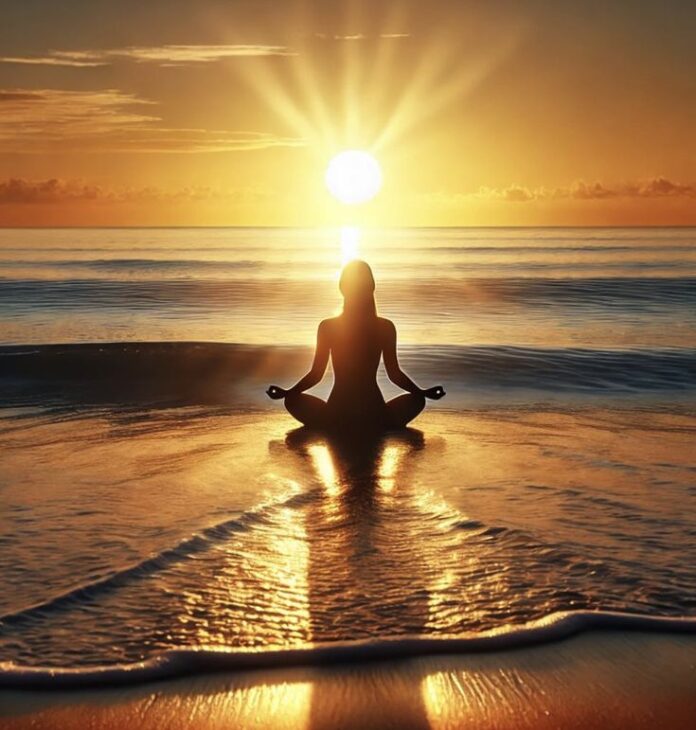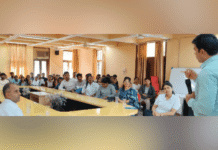Sri Vijaya Puram: Over 120 students from various government and private schools across the Andaman and Nicobar Islands gathered at the Model School Hall on Thursday to participate in the first-ever Surya Namaskar Challenge, an initiative aimed at promoting holistic wellness and traditional health practices among schoolchildren.
The event, organised locally, marked a significant moment for the island’s school yoga ecosystem, with widespread participation from urban and rural institutions. Yoga expert Dr Shweta attended the event as the chief guest and addressed the gathering. In her remarks, she highlighted the physical and mental health benefits of regular practice of Surya Namaskar and encouraged all present, students, teachers, and parents alike, to make it part of their daily routines.
The yoga challenge was open to both boys and girls from Class VI to Class XII, with schools nominating their top students to compete in posture alignment, breathing coordination, and endurance. The competition received enthusiastic participation from across the district, reflecting a broader awareness of yoga’s relevance among young learners.
In the boys’ category, B. Raju from GSS Junglighat secured the top position, followed closely by Kunal Uraon, also from GSS Junglighat. Seshanda Das of GSS Manglutan took the third spot. In the girls’ section, Sriyanka Roy from SS Sagritara claimed first place, while L. Kumari from GSS Junglighat came second, and S. Diviya Bharati of GSSS Rangachang finished third.
Teachers accompanying the students said the competition offered a much-needed platform for physical activity, especially in the post-pandemic phase when digital dependency among students remains a concern. Organisers ensured the event followed safety protocols and was evaluated by certified yoga instructors to maintain fairness and technical standards.
Officials noted that while yoga has been part of the school curriculum under various government health and physical education initiatives, structured competitions like these are rare and often limited to annual functions. This event, however, was designed specifically to test skill, consistency, and posture retention across all age groups.
Parents present at the event shared that the lead-up to the competition had sparked new interest in yoga practice at home, with many children setting daily practice routines. A parent from Junglighat remarked that her daughter now performs Surya Namaskar each morning “with more focus and intent” thanks to the competition.
Though no formal announcement was made, education department insiders indicated that based on the success and student response to the event, the Surya Namaskar Challenge may be made an annual event. Discussions are also reportedly underway to expand participation to zonal and inter-island levels in future editions.
Many schools have already begun exploring ways to strengthen yoga training within their morning assemblies and physical education hours. Teachers expressed hope that such initiatives would be supported with adequate resources, including mats, instructor training, and more practice hours built into the timetable.
The event concluded with distribution of certificates to all participants and prizes to the winners in each category. A large turnout of students, teachers, and parents added to the celebratory atmosphere of the day.
With lifestyle-related disorders increasingly affecting young populations, especially in urban pockets, educators say early engagement with holistic fitness practices like yoga is not just timely, but essential. Events like the Surya Namaskar Challenge, they believe, could be a first step in shifting mindsets from competition-based physical activity to lifelong wellness routines.
The challenge marks a growing recognition within the islands’ education landscape of the role traditional practices like yoga can play in building both physical stamina and emotional resilience among students.





